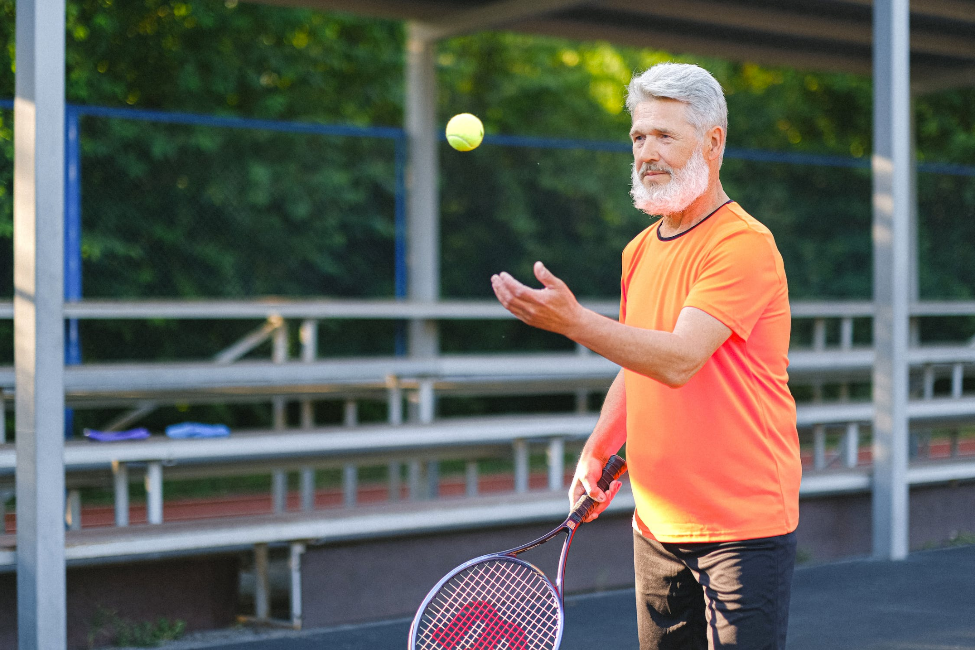
Photo by Ann Shvets from Pexels
The rise in active lifestyles among older adults has led to an increased focus on sports injuries in senior athletes. This demographic, while showing admirable enthusiasm for staying physically active, presents unique challenges in treating and managing sports-related injuries. Their physiological characteristics and responses to treatment differ significantly from younger athletes, necessitating a specialized approach to their care.
Addressing sports injuries in senior athletes goes beyond the immediate treatment of the injury itself. It involves a comprehensive understanding of age-related changes in the body and the subsequent adaptation of medical and rehabilitative practices. Modern advancements in orthopedics and sports medicine have empowered healthcare professionals to provide highly effective, age-appropriate care, ensuring that senior athletes can continue engaging in sports activities safely and confidently.
Understanding Senior Athletes
One of the most notable changes in senior athletes is the gradual decline in muscle mass and bone density, a condition known as sarcopenia and osteopenia, respectively. These changes can lead to a decreased capacity for physical exertion and a heightened risk of injuries like fractures and strains. Additionally, the aging process can reduce flexibility and joint mobility, further increasing the risk of sports-related injuries.
Cardiovascular changes are also a crucial consideration. As people age, their heart rate and blood vessel elasticity may decrease, impacting stamina and recovery time. These cardiovascular shifts necessitate a careful approach to exercise intensity and duration for senior athletes.
Moreover, the healing process in older adults can be slower than younger individuals due to decreased cell regeneration capabilities and other age-related factors. This slower recovery rate is critical in injury treatment and rehabilitation, requiring tailored strategies to ensure effective healing and prevent re-injury.
In treating and managing sports injuries among senior athletes, it's crucial to consider the potential need for emergency services. Cases of severe injuries, such as fractures or acute joint dislocations, are not uncommon in this demographic. These situations often prompt crucial questions about emergency care options.
Senior athletes, in particular, are concerned with the specifics of their healthcare coverage, frequently asking, "Is an ambulance covered by Medicare?" in such urgent scenarios. Addressing these concerns is vital, as it not only aids in immediate care decisions but also influences the overall approach to injury prevention and management in senior athletes.
Common Sports Injuries in Senior Athletes
While exhibiting a commendable commitment to fitness and sports, senior athletes are prone to specific types of injuries that differ from those typically seen in younger athletes. The nature and frequency of these injuries often relate to the physiological changes associated with aging. Understanding these common injuries is crucial for effective prevention and treatment.
- Tendon Injuries: Tendons lose their elasticity and become more brittle with age, increasing the risk of tears and tendinitis. Rotator cuff tears and Achilles tendinitis are common examples.
- Arthritic Changes: Osteoarthritis is a frequent issue in senior athletes, particularly affecting weight-bearing joints such as the knees and hips. This condition can cause significant pain and mobility limitations.
- Fractures:Reduced bone density in older adults makes them more susceptible to fractures, especially in the context of sports. Hip and wrist fractures are particularly prevalent due to falls or direct impacts.
- Muscle Strains: With age, muscles become less flexible and more prone to strains. Senior athletes often experience strains in the back, hamstrings, and calf muscles.
- Ligament Injuries: The ligaments, like tendons, become less flexible and more prone to injury. Knee injuries, such as tears in the anterior cruciate ligament (ACL), can be more common in this group.
Treatment Approaches: General Vs. Senior Athletes
A personalized treatment plan is necessary to address the specific needs of senior athletes. By taking a careful and individualized approach, senior athletes can receive the best possible care and support to help them recover and get back to their sport.
Conservative Management
Often, the first line of treatment for senior athletes involves conservative methods. This may include rest, ice, compression, and elevation (RICE), as well as the use of nonsteroidal anti-inflammatory drugs (NSAIDs). The emphasis is on non-invasive treatments that can provide relief and aid in recovery without the risks associated with surgery.
Physical Therapy
Tailored physical therapy is a cornerstone of treatment for senior athletes. It focuses on restoring strength, flexibility, and balance, which are crucial for this age group. Therapists often design programs that cater to the individual's specific injury and overall physical condition, considering their slower healing process and reduced physical resilience.
Surgical Options
While surgery may be a treatment option, it's often considered more cautiously for senior athletes. Factors such as the individual's overall health, surgery's potential risks and benefits, and the expected recovery time are carefully weighed. When surgery is deemed necessary, minimally invasive techniques are often preferred to reduce recovery time and complications.
Holistic Approaches
Treatment for senior athletes often includes holistic approaches that address not just the physical aspects of the injury but also nutritional and lifestyle factors that can influence recovery. Adequate nutrition, hydration, sleep, and stress management techniques are emphasized to support overall healing and well-being.
Customized Rehabilitation
Post-injury rehabilitation is tailored to the senior athlete's specific needs. This includes exercises to regain strength and mobility, but with a pace and intensity that align with their body's healing capacity. Rehabilitation plans also focus on injury prevention strategies to avoid future injuries.
Wrapping Up

Photo by Barbara Olsen from Pexels
Sports injuries in senior athletes require distinct treatment strategies compared to younger counterparts. This demographic faces unique challenges due to age-related physiological changes, necessitating tailored approaches in treatment, rehabilitation, and recovery.
Specialized care for senior athletes focuses on accommodating slower healing processes and ensuring a holistic treatment plan that includes understanding healthcare coverage aspects, such as Medicare's ambulance service provisions. This specialized approach enables senior athletes to recover and safely return to their active lifestyles effectively.
